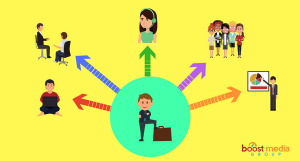If the pandemic has reminded (or taught) entrepreneurs anything, it’s resourcefulness.
In some cases, waning or obsolete markets forced founders to rethink the utility of their suddenly useless inventory stockpile. In other cases, lockdowns or travel restrictions simply prevented business as usual from running its course, and executives and business leaders needed to change course, or create an entirely new one. Some historical, and contemporary, examples of brilliant business pivots that might stimulate your neurons to greater creativity in your business:
- Founded in 1912, Kutol was an established business selling a putty-like cleaner for removing soot from walls of homes (which were generally heated by coal back then). As gas & electricity replaced coal, and their cleaning product became irrelevant – they saw another potential for their business. You might know their business as Play-Doh today.
- Earls Restaurants, which had grown to 68 restaurants in the US and Canada, faced a crisis of evaporating revenues due to lockdowns, and tens of thousands of dollars in food that was about to go to waste. Seeing an opportunity in that grocery stores were limiting the number of shoppers inside at any given time, Earls decided to sell their fresh produce, breads, desserts, and other groceries as a temporary business pivot.
- Nokia actually began as a paper mill, and has been in business for more than 155 years! Ever since the first call was made using a Nokia device in 1991, Nokia divested out of other interests and prior to the advent of the iPhone in 2007, they were the market leader in the mobile phone market, enjoying 97% market share!
- AirBnB founder Brian Chesky was quoted as saying he had to make 10 years worth of decisions in 10 weeks during the pandemic, navigating AirBnB’s survival amid a nearly global travel halt. From highlighting more local stays, to virtual service offerings like cooking classes or magic shows over Zoom, Chesky and his team at AirBnB quickly adapted to save the company, and preserve their hosts’ ability to generate an income.
- Fitness entrepreneurs who could no longer teach classes or train their clients in person rented their fitness equipment out, hosted outdoor bootcamps, took to virtual training sessions, and some even made money off of their muscle – as general laborers or even movers.
There are countless more examples of innovation and creativity in pivoting one’s value proposition, or even core business model. A few principles that can help maximize the success of your business innovation are:
- Create or review your ideal customer avatar. As markets shift, businesses must reevaluate how they create value for their ideal audience, as their audience’s behavior, needs, wants, goals, and worries have inevitably shifted.
- Know the lay of the land. The specific governance, laws, emerging disruptive technology, and competitive landscape in your industry or niche must all be navigated with military prowess en route to asserting a meaningful, sustainable competitive advantage.
- Remember your purpose. There’s a Grand Canyon of a difference between a way to make money, and a cause that defines you. There’s nothing wrong with starting a business just to make money (provided said business operates ethically and legally and does not, by its nature, inflict harm or engage in immoral acts). The challenge is, if you started a business just to make money, and you’re not making money for any extended period – you’re liable to close said business. None of the 5 stories you just read about would have turned out as they did without profound conviction and a refusal to throw in the towel. A deep and meaningful purpose does this for an entrepreneur (and even their entire team).
- Know your strengths, weaknesses, and passions. Entrepreneurship is a marathon, not a sprint, for most of us. Anyone can be on their best behavior for the first date, even the first 3 months. Eventually – the real you (and the real them) shows up. Running a business is similar in that eventually, you start to put off what you should do if it isn’t something you enjoy, and are somewhat good at.
- Possible is a state of mind. It’s only impossible until someday else does it. It took decades for someone (namely Roger Bannister) to break the once-thought inconceivable 4-minute mile barrier. Just 46 days after the first man ever to do it, the feat was bested by Australian John Landy. Someone has to be the Roger Bannister of real-time financial reporting, or sustainable global fishing practices, and so on. Don’t listen to naysayers who think your idea is ‘impossible’ – use it as fuel!
As the cliché goes, change is inevitable. What isn’t inevitable – is that your company will still be standing on the other side of change. Choose to change. Choose to innovate. Choose to disrupt yourself, if for no other reason than to bring the chaos of change at least somewhat under your control. Success is a series of choices, and so is defeat. The first choice for many who get left behind – is inaction. That is a choice that entrepreneurs today simply cannot afford. Then again, true entrepreneurs didn’t become founders through inaction, nor did they survive to this point by failing to act.
True entrepreneurs thrive in the face of adversity – and with hope that it can be done, and strategies to get there – anything is possible!
Business & Finance Articles on Business 2 Community
(68)







